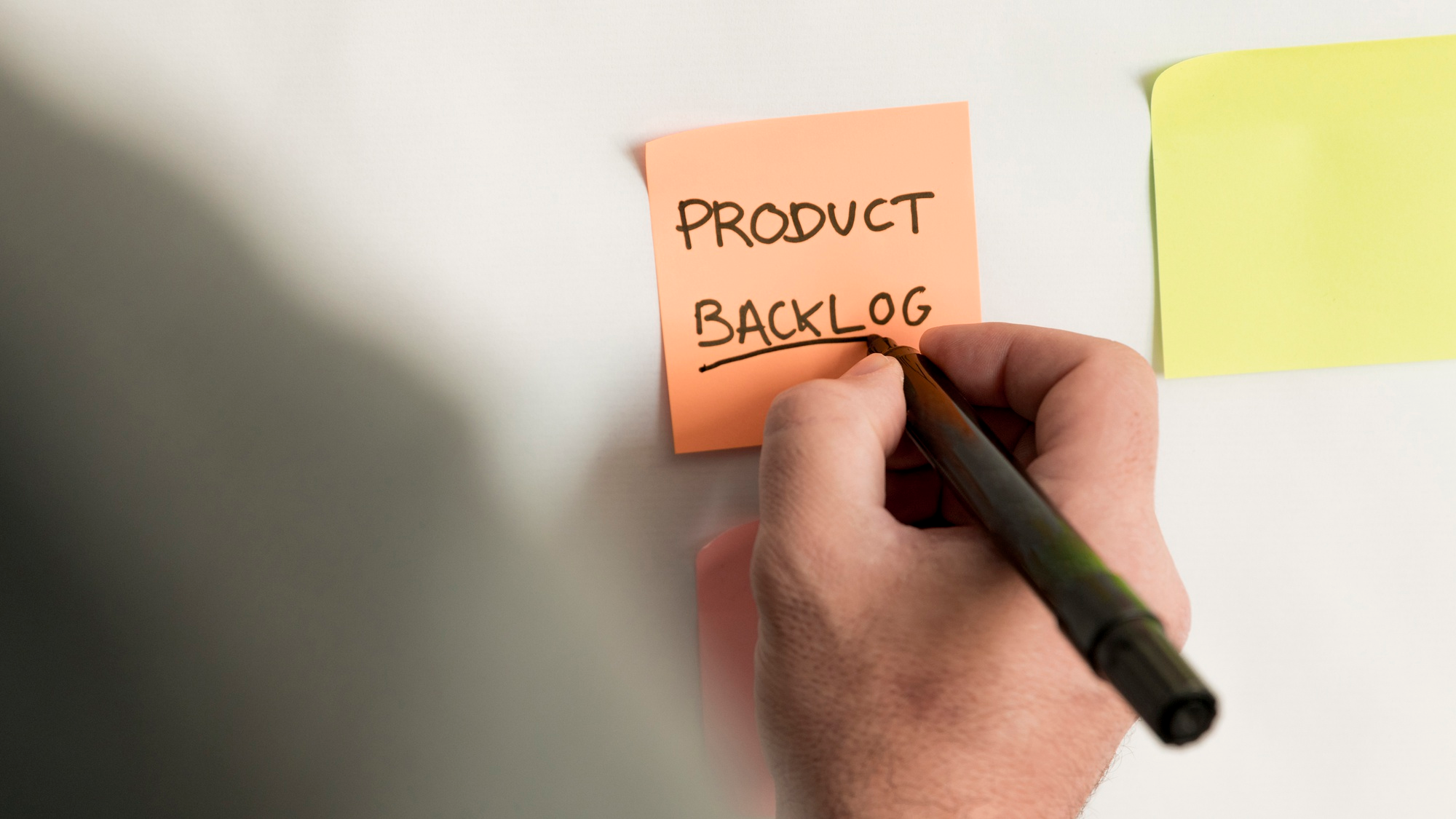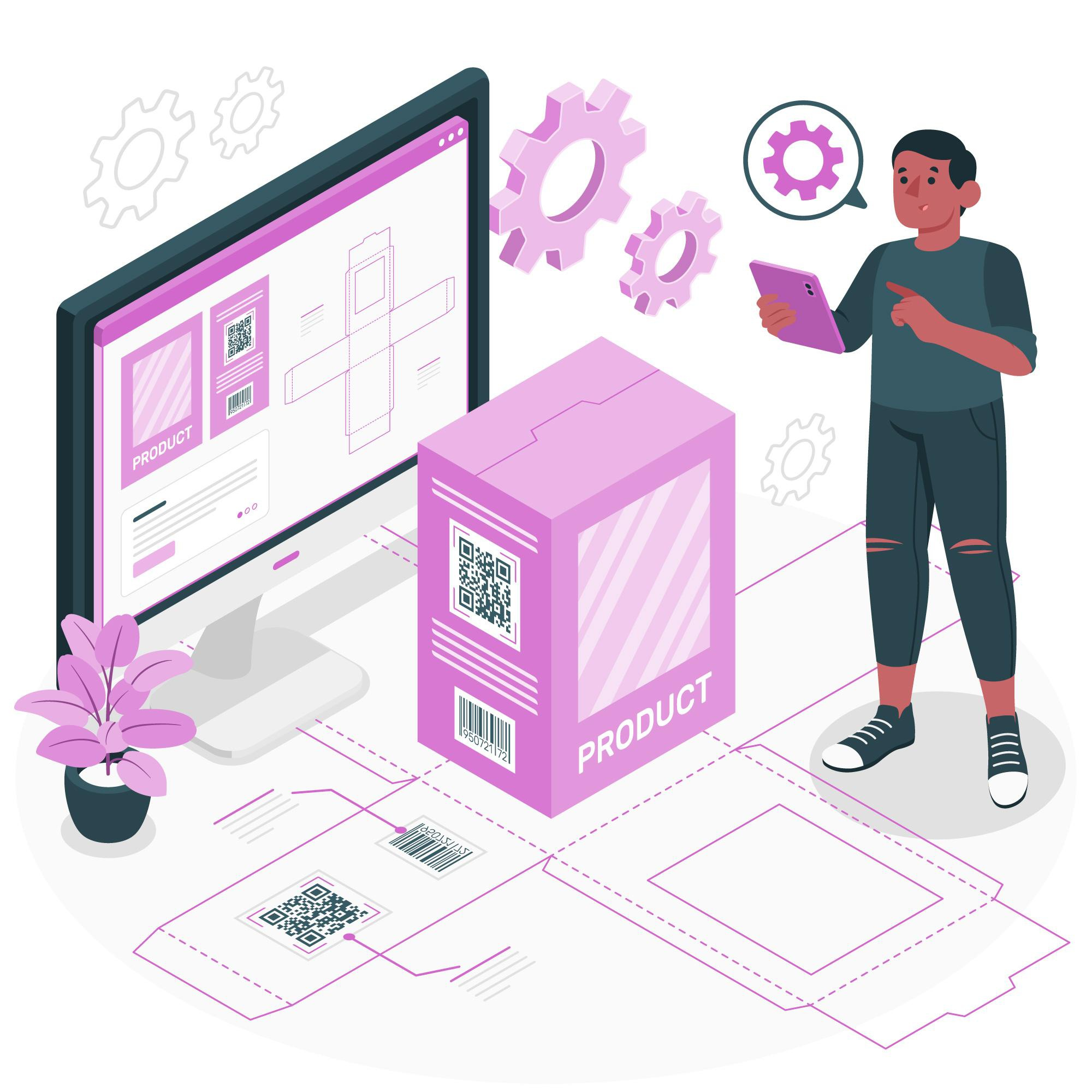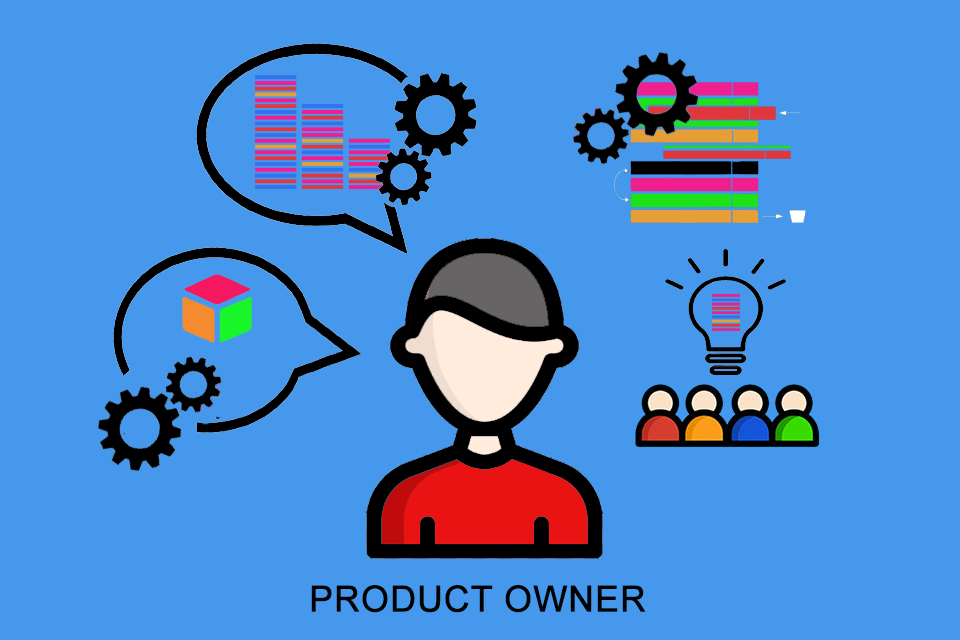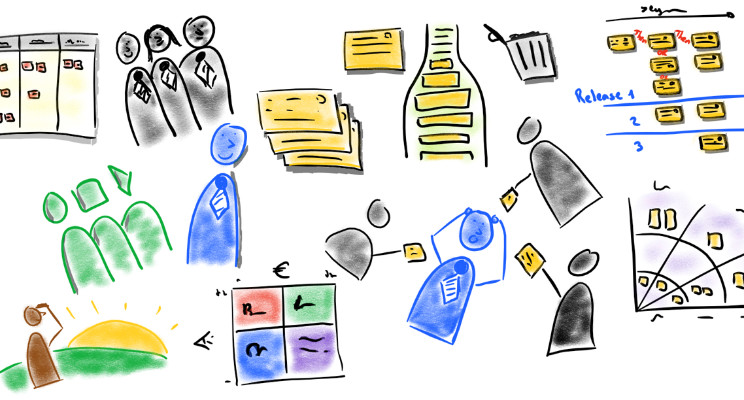In the fast-paced world of software development, managing a product backlog efficiently can be the difference between a successful product and a missed opportunity.
Welcome to the realm of Agile Backlog Management, a dynamic approach that empowers product owners to navigate the complex landscape of development teams, user stories, and strategic visions.
In this article, we’ll embark on a journey through the art of Agile Product Backlog Management, uncovering essential tips and strategies for product owners to steer their projects toward success.

Definition of Agile Backlog Management
Picture this: you’re planning a big road trip with friends. You’ve got a list of places to visit, activities to do, and snacks to pack. That list – that’s your roadmap. In the world of building things like software or products, we call this list the Agile Backlog.
Backlog Management with Agility is like being the captain of that road trip. It’s all about organizing and prioritizing the things you want to do, but in a way that makes sense for your team. Just like you’d decide which places to visit first and which snacks to grab before hitting the road, backlog management with agility helps you decide what tasks and features to work on first.
In simple words, backlog management with agility is like being the conductor of an orchestra. You have a bunch of different instruments (tasks) that need to play together in harmony. You decide which instrument plays when and how loud, all to create a beautiful symphony – or in our case, an amazing product.
So, whether you’re building software, designing a website, or crafting the next big thing, backlog management with agility is your guide, helping you keep things organized, focused, and ready for success. Just like planning that road trip, it’s all about having a clear direction, being flexible, and making sure everyone’s on the same page.

Role of Product Owner in Product Backlog Management
Imagine you’re the captain of a ship, navigating through uncharted waters. Your goal is to reach a distant island filled with treasure. Now, replace the ship with a project, and the island with a successful product, and you’ve got the essence of the Product Owner’s role in Product Backlog Management.
The Product Owner is like the captain of this ship, steering the project toward a valuable and successful destination. Let’s dive into the details of their role in Product Backlog Management:

Visionary Navigator
Just as a captain sets the course for the ship, the Product Owner sets the vision for the product. They have a deep understanding of customer needs, market trends, and business goals. This vision guides every decision they make regarding the Product Backlog.
Backlog Curator
Think of the Product Backlog as a museum, filled with exhibits of tasks, features, and improvements. The Product Owner carefully curates this museum, selecting which items are most valuable and relevant. They ensure that each exhibit contributes to the overall success of the product.
Prioritization Guru
The Product Owner is a master of prioritization. They evaluate each item in the Backlog and rank them based on factors like customer value, market demand, and strategic alignment. This ensures that the development team works on tasks that deliver the most impact.
Bridge Builder
Communication is key, just as it is on a ship. The Product Owner acts as a bridge between different stakeholders – customers, development teams, and other departments. They gather insights, listen to feedback, and ensure that everyone’s perspectives are considered.
Decision Maker
In the world of Product Backlog Management, decisions abound. The Product Owner makes tough calls, deciding what to work on next, what to prioritize, and when to pivot. Their decisions are informed by the project’s goals and the best interests of the product.
Adaptation Captain
The seas of development can be unpredictable, much like the ocean. The Product Owner navigates these waters by adapting the Product Backlog. They embrace change, add new tasks, and adjust priorities based on new information or shifting market dynamics.
Value Delivery Steward
Ultimately, the Product Owner’s role is to ensure that the product delivers value. They monitor the progress of tasks, review completed work, and make sure that each piece of the puzzle aligns with the grand vision they’ve set.
Feedback Integrator
Just as a ship’s crew communicates with the captain, the Product Owner gathers feedback from customers, users, and stakeholders. This feedback is integrated into the Product Backlog, helping to shape the product’s direction and features.
In a nutshell, the Product Owner is like the guiding star of Product Backlog Management. They combine strategic thinking, customer empathy, and decision-making prowess to lead the development journey. Through careful curation, prioritization, and adaptation, they ensure that the ship – your project – reaches its treasure-filled destination of success.
The Heart of Product Development: Product Backlog
The Product Backlog is the beating heart of any Agile project. It’s like a to-do list, but on steroids. This prioritized collection of user stories, features, and tasks outlines what the development team will work on next. Think of it as a dynamic document that evolves with your project. But what makes a Product Backlog healthy?
Here we listed some characteristics of a proper product:

Manageable Size
Imagine trying to juggle a hundred balls at once – that’s what an unmanageable backlog feels like. Keep your backlog concise and focused, allowing the team to make meaningful progress without feeling overwhelmed.
Prioritized List of Items
Not all tasks are created equal. A well-prioritized backlog ensures that the most valuable and impactful items are at the top, ready to be tackled.
Up-to-Date and Relevant
Your backlog isn’t a stagnant entity. Regularly update it to reflect changes in requirements, market trends, and customer feedback. Remember, relevancy is key.
Clear Business Value: Each item in your backlog should contribute to the overarching business goals. Clear values ensure that every development effort aligns with the strategic vision.

Product Backlog Management Activities
Now that we know what the Product Backlog is and why it’s essential, let’s roll up our sleeves and dive into the exciting world of creating and managing it. Think of this as sculpting a masterpiece – you’re chiseling away to reveal the true beauty of your project.
Defining User Stories and Backlog Items
Imagine you’re telling a story – not just any story, but one that paints a clear picture of what your product should do. These little tales are called User Stories. They’re like building blocks, describing what a user needs and why. For instance, “As a user, I want to log in so I can access my account” is a user story that captures a simple need.
Backlog item details encompass the specific information and attributes associated with individual tasks, features, or user stories within a Product Backlog. These details provide a comprehensive understanding of what needs to be accomplished and guide the development process.

Techniques for Backlog Refinement and Grooming
Here are some techniques for backlog refinement and backlog grooming:
Iteration Planning Meetings
Just like a team huddle before a big game, an iteration planning meeting brings everyone together. You discuss, review, and fine-tune the User Stories in your Product Backlog. It’s like getting your game plan ready before hitting the field.
Collaboration with Development Team and Stakeholders
Imagine you’re working on a puzzle with friends. Each piece you put in place brings the bigger picture to life. Similarly, involving your development team and stakeholders in the process helps fit the right pieces into your Product Backlog puzzle.
Periodically Deleting Items and Managing Technical Debt
Think of your Product Backlog like a garden. Sometimes, you need to prune the plants to help them grow better. Similarly, you periodically review your backlog and remove items that are no longer needed. Plus, you manage any technical debt – those little fixes or shortcuts that you took – to keep your project’s garden healthy.
Creating and managing the Product Backlog is like being an artist and a gardener. You’re crafting stories, refining plans, and ensuring that everything aligns beautifully. It’s all about teamwork, communication, and a touch of pruning to create a thriving environment for your project to flourish.

Prioritizing the Product Backlog
Imagine you’re a conductor leading an orchestra. You have a wide range of instruments, each capable of creating beautiful music. But to create a masterpiece, you need to decide when each instrument plays its part. This is where prioritization comes in – orchestrating the harmony of tasks in your Product Backlog.
Importance of Backlog Prioritization
Picture a busy marketplace with stalls selling all kinds of goodies. Some items are more in demand than others, and people are lining up for them. Backlog prioritization is like ensuring that you serve the most sought-after goodies first. It ensures that your team works on the tasks that deliver the most value to your users and business.
Techniques for Prioritizing Tasks
Business Value vs. Effort: Imagine you’re packing for a trip. You want to carry items that are both valuable and easy to pack. Similarly, when prioritizing tasks, consider the balance between the value a task brings and the effort required to complete it. This helps you tackle high-impact tasks efficiently.
Listening to the Crowd: Just as you pay attention to what people are talking about in a buzzing café, gather input from stakeholders, users, and customers. Their voices help you understand which tasks matter most to them.
Risk vs. Reward: Think of prioritization as a game of strategy. Some tasks might have higher risks but also offer bigger rewards. By evaluating the potential risks and rewards, you can make informed decisions.
Balancing Trade-Offs and Focusing on the Highest Priorities
Imagine you’re a chef preparing a menu. You have limited ingredients and time, so you need to choose dishes that delight your customers the most. Prioritization involves making tough trade-offs. It’s about deciding which tasks to focus on now, and which to save for later. By striking the right balance, you ensure that your team’s efforts lead to the most impactful outcomes.
Prioritizing your Product Backlog is like crafting a well-orchestrated symphony. Each note (task) has its place, contributing to the overall melody (product success). It’s a dance of value, effort, and strategy that ensures your team’s energy is directed toward the highest priorities, making your product’s journey a harmonious one.

Collaborating with Stakeholders
Just as orchestrating a surprise party requires gathering ideas, planning activities, and ensuring everyone’s involvement for a successful celebration, Backlog Management with Agility calls for collaborative efforts with stakeholders to ensure your project thrives.
In this process, customers take on the roles of both ultimate critics and enthusiastic supporters. Similar to an engaged audience at a play, their reactions guide your actions. By consistently involving them, valuable insights are gathered, and their feedback, much like applause or constructive criticism, shapes the evolution of your Product Backlog.
Consider yourself part of a sports team where each player contributes a unique skill, working harmoniously towards victory. Likewise, collaborating with your development team and other stakeholders is akin to participating in a game. Ideas are shared, challenges are discussed, and efforts are aligned. Just as teamwork scores the winning goal in a match, collaboration ignites the triumph of your project.

Conclusion
In the intricate dance of Agile Product Backlog Management, product owners are the choreographers.
By understanding the heartbeat of a healthy backlog, prioritizing with finesse, and fostering collaboration, you can guide your team toward success.
Remember, Agile isn’t a destination; it’s a journey of continuous improvement.
So, set sail with your backlog as your compass and steer your ship toward the horizon of value-driven product development.

People Also Ask (FAQs)
Why is Agile Product Backlog Management important for product development?
Agile Product Backlog Management is a cornerstone of successful product development. It serves as a dynamic roadmap that guides the development team in delivering value to customers. By prioritizing tasks, refining user stories, and adapting based on feedback, Product Backlog Management ensures that the product remains aligned with the vision, customer needs, and market trends. It enables efficient collaboration, informed decision-making, and continuous improvement, all of which contribute to the overall success of the product.
What is the role of a Product Owner in Agile Product Backlog Management?
A Product Owner plays a crucial role in Agile Product Backlog Management. They are responsible for defining the product vision, prioritizing tasks, and ensuring the Backlog aligns with customer needs and business goals. They collaborate with stakeholders, gather feedback, and make decisions that shape the product’s direction. Essentially, they act as the captain, guiding the development team toward creating a successful and valuable product.
How do you prioritize tasks in the Product Backlog effectively?
Prioritizing tasks in the Product Backlog is a strategic process. One effective technique is to evaluate tasks based on their business value and the effort required for implementation. Engaging with customers and stakeholders to gather their input also helps in understanding the most impactful tasks. Another approach is to assess risks versus rewards to make informed decisions. Balancing considerations and focusing on the highest priorities ensures that the development team works on tasks that deliver the most value to the product.



